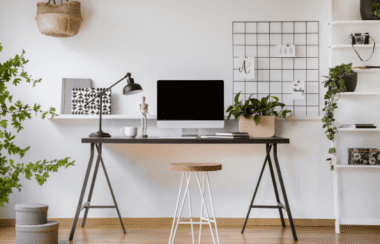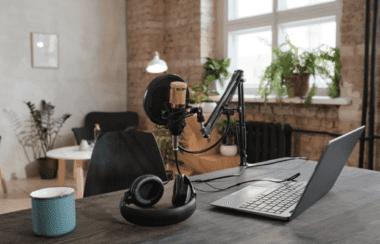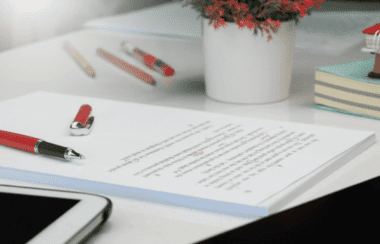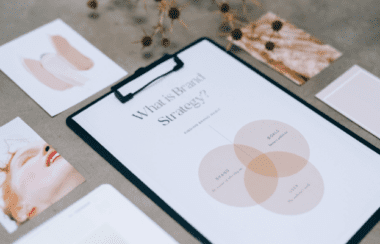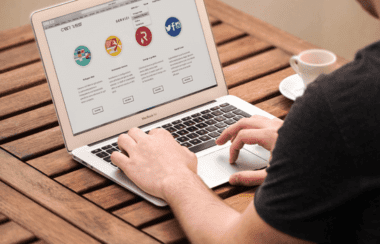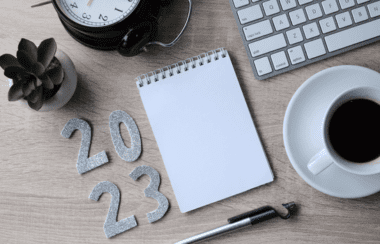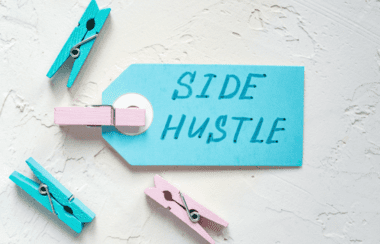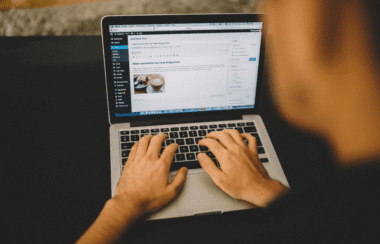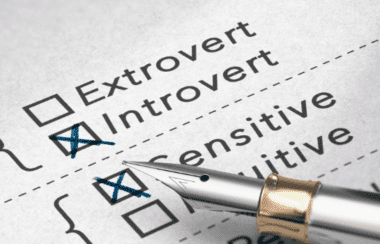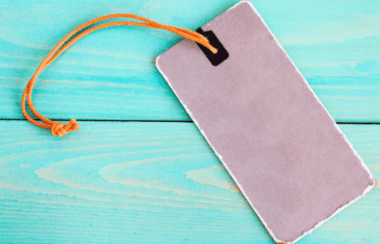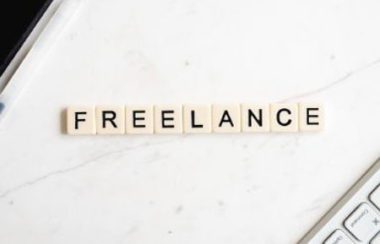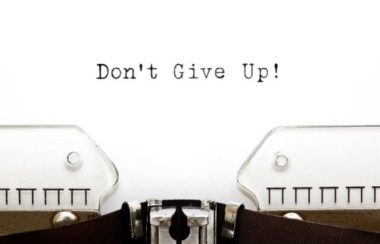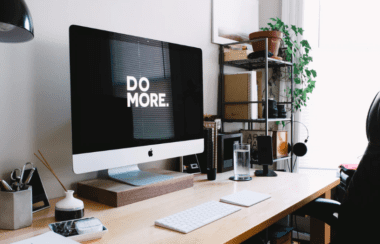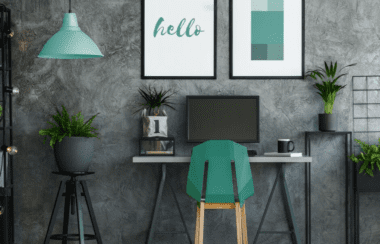How to Maintain a Work-Life Balance When You’re Always at Home
By Jena Kroeker
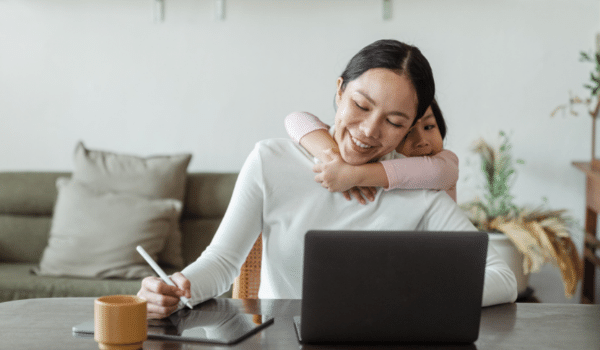
At the end of January, I asked a question in our Freelance University Facebook group that foreshadowed this blog post. Looking back, it was a preview to the topic of how to maintain a work-life balance when you’re always at home. At the time, a snowstorm had blanketed my area and made driving treacherous and walking unpleasant. My husband and I needed to stay home until the roads cleared. I therefore asked our FreeU students how they stay motivated and productive when they’re stuck inside the house.
Some people said they coped with being stuck inside by going out. But I was trying to get to the heart of an issue that now faces many of us. With the COVID-19 pandemic affecting our lives, we don’t always have the option of going out when we want to. So, we need to develop strategies to balance two functions in one space. To cope with the snowstorm, I developed a daily routine that included these elements:
• A 30-minute block of exercise
• Cozy meals with a cup of coffee
• A productive work routine with breaks approx. every 30 minutes
• A quick walk around the apartment every 30 minutes
• A goal of finishing work before dinner and avoiding working in the evening or late night.
That’s one strategy, but freelancers and virtual assistants need more than that to truly balance work and life. We’ll discuss more strategies below.
What is a Work-Life Balance?
How do you define a work-life balance? I like how Sophia Bernazzani explains it in her article, “9 Tips to Improve Work-Life Balance When Working from Home.” She says,
“Work-life balance is a term used to describe how workers distribute their time between professional and personal obligations. When someone has a good work-life balance, they’re able to allocate their time so they don’t overwork and can focus on other aspects of their life like family, friends, hobbies, or social activities.”
Do you find that the pendulum swings from one extreme to the other, and not always in the same way? When I started freelancing 20 years ago, life often engulfed work. I’d sit down to work, notice some clutter in the room, and all of a sudden I became the Martha Stewart of home decorating. I’d rearrange the bookshelves, dust, vacuum, and then finally get focussed on the tasks I was supposed to do.
I’d agree to babysit people’s kids during the day, and I accepted invitations left, right, and center:
“You want to go for lunch? I’m there!”
“Dinner on Sunday night? Count me in!”
“You’ve come to town and want to see the sights? I’ll take you!”
Then I realized I needed to create some boundaries because I was barely getting my projects done on time. The transition was rocky because it was sometimes hard for others to accept that I needed to work. I was one of the first people in my community to freelance from home, so working from home was sometimes seen as “not working.”
But now that it’s become common for people to work from home, we may have the opposite problem. Instead of life engulfing work, work may engulf life. We could find it difficult to switch off and transition to “life mode” without constantly thinking about work. Or we could lose track of time while working and forget to eat regular meals or socialize with loved ones.
How to Maintain a Work-Life Balance
But never fear! We can steady that pendulum swing. Here are some strategies for how to maintain a work-life balance when you’re always at home:
1. Give yourself grace.
The first thing to remember is that balancing home and work is like juggling balls when there’s always the chance someone will throw another one at you unexpectedly. The day’s events could be unpredictable. And no matter how much you try to maintain a work-life balance, it won’t always go according to plan.
For example, I had my day completely planned out today. I was going to have a peaceful breakfast, do some exercise, and then calmly begin writing this blog post. I envisioned blissful hours of uninterrupted creativity as I shared my thoughts with all of you readers.
That didn’t happen. My morning was busier than I expected with messages, phone calls, and unexpected plumbing issues. Then, just as I was about to sit down to work, my husband and I found out there was a problem with one of our appliances.
You might find it difficult to stick to a routine these days because your whole family is at home. Or if you live by yourself, you might be struggling with loneliness. We all have concerns that weigh us down. So, be gentle with yourself and give yourself grace. Dana Meir puts it this way in her article, “8 Tips to Improve Work-Life Balance When Working from Home”:
“Whatever agreements you come to with the people around you, make sure you’re tending to your own needs and being realistic with yourself. A perfect work-life balance may not be attainable a hundred percent of the time and the constant search for it can be exhausting, so allow yourself to embrace imperfection every now and again.”
2. Compartmentalize your life.
Many articles suggest a daily schedule as a key strategy in how to maintain a work-life balance. In addition, creating tangible divisions between work and life activities can signal which mode you’re in. If you’ve ever watched the children’s television show Mister Rogers’ Neighborhood, you’ll remember how Mister Rogers changed from a suit jacket and dress shoes to a cardigan and casual shoes at the beginning of the show. It’s how viewers knew the show was starting.
The article above recommends having “work clothes and home clothes.” It suggests that you could change your outfit at the end of your workday to signal that your work responsibilities are ending and your personal time is beginning.
As I mention in a previous FreeU blog post, I’ve often considered pajamas as “work clothes.” But that’s a risky endeavor. I once wore pajamas for so long, I forgot to change out of them before going to a Zumba fitness class. Once there, I just decided to stay and hoped no one would notice. 🙂
Another way to transition from work to personal time is to have specific practices that make meaning from the day. I love Melody Wilding’s idea in an article titled “How To Work From Home Without Burning Out Or Losing Work Life Balance.” She suggests using a practice called “High/Low/Hero.” The categories are as follows:
“Your daily ‘high’ – what went well or was fun and exciting
Your daily ‘low’ – what didn’t go well or was disappointing
Your ‘hero’ – a person who was a hero to you or a moment you made yourself proud”
What are some other practices or rituals you could use to transition from work to life? Think about options that might work for you, and create a list to choose from.
3. Limit distractions.
As I mentioned above, my day began with a series of distractions. Some, like plumbing issues and broken appliances, need to be attended to. If you’re batching your emails and replying at certain times, you may receive additional messages you need to address on the fly.
But other distractions can be limited. For example, whenever possible, I turn the sound off on my mobile devices. Otherwise, I’ll hear notifications throughout the day. My email notification sounds like a doorbell: “ding-dong.” And my project management app speeds up that notification to a double “ding-dong-ding-dong.” You can imagine how distracting those sounds can get. And once they’re in your head, you’re always listening for them. Sometimes, I’ve heard that notification sound on TV and immediately looked at my cellphone.
Unfinished housework around you can also be a distraction. In an article titled “More people are being asked to work from home — here’s how to do it, according to our remote editors and freelancers,” Jackie Brown suggests ignoring laundry and dirty dishes until you’ve ended your workday. If you find it annoying, make sure you can’t see the unfinished chores, and try not to think about them until after work.
When you’re figuring out how to maintain a work-life balance, take a piece of paper and write down all the things that distract you. Divide the list into distractions from work and distractions from life. Then strategize how you can limit each type of distraction.
4. Discipline your communication.
In addition to controlling email and social media notifications, it’s important to control what you’re talking about during certain times. The surest way to let work engulf life is to talk about work when you’re not working.
For instance, my husband is also a freelancer who works virtually, sometimes collaborating on projects with me. We had to make a deal that we won’t talk about work during “home” time, and whenever possible, we try to limit our communication about work to written messages in Asana. That way, we don’t intersperse our personal conversation with work topics. If we notice we’ve started talking about work, we stop and agree to continue the conversation later, during designated work hours.
Kym Dunbar also recommends setting ground rules for others in her article, “How to work from home effectively.” She stresses the value of a private home office and the importance of ensuring you aren’t subject to constant interruptions from those around you.
5. Remember what’s important.
As I mentioned at the beginning, the pendulum can swing from one extreme to the other. One day, you may put too much emphasis on work, and the next on life. It’s a constant struggle figuring out how to maintain a work-life balance… especially when you’re home all the time.
At the end of the day, if you can finish your work by the deadline and spend some time with friends and loved ones, you’re doing okay. You might be muddling along, imperfectly balancing your priorities, but you need to accept that you tried.
And especially now, it’s important to take good care of ourselves. So, another thing to consider is whether you can take a break from work when you’re not feeling well, either by extending deadlines or hiring a subcontractor. Often as freelancers and virtual assistants, we push through our projects. I know I’ve often worked while suffering from a headache or a cough and sniffles.
But, as the article above says, “Working from home doesn’t mean you have to keep working when sick,” and “You’re better off taking the time to let your body recover than pushing yourself to the point of burn out.” Taking care of yourself will ultimately help you finish your freelance projects with time left to spare. You’ll tip the work-life balance in a favorable direction.
And now we’d love to hear from you! How do you maintain a work-life balance when you’re always at home? Please share your advice and strategies in the comments below.



